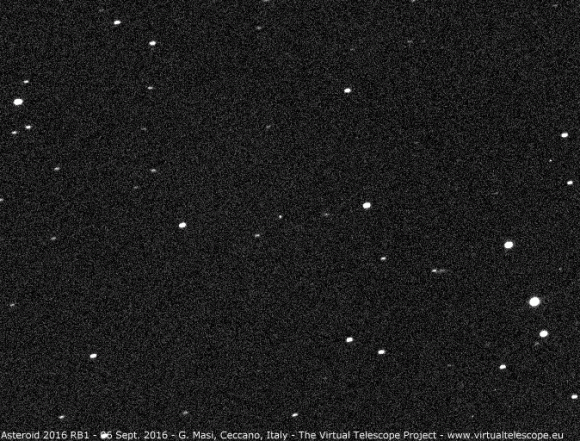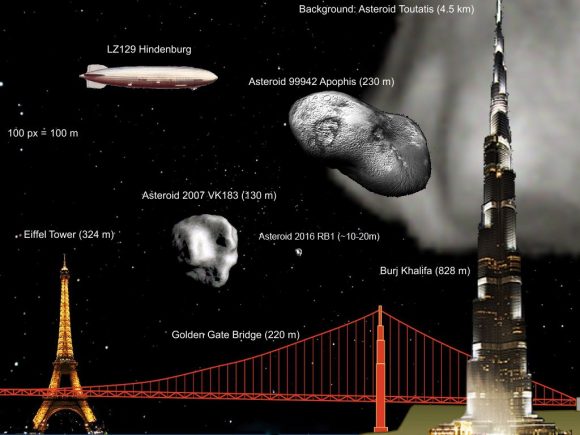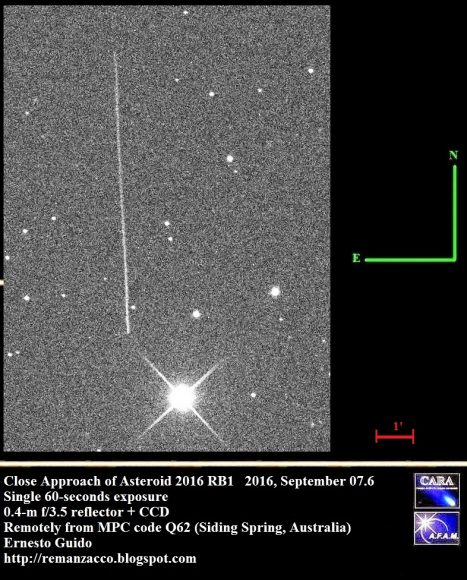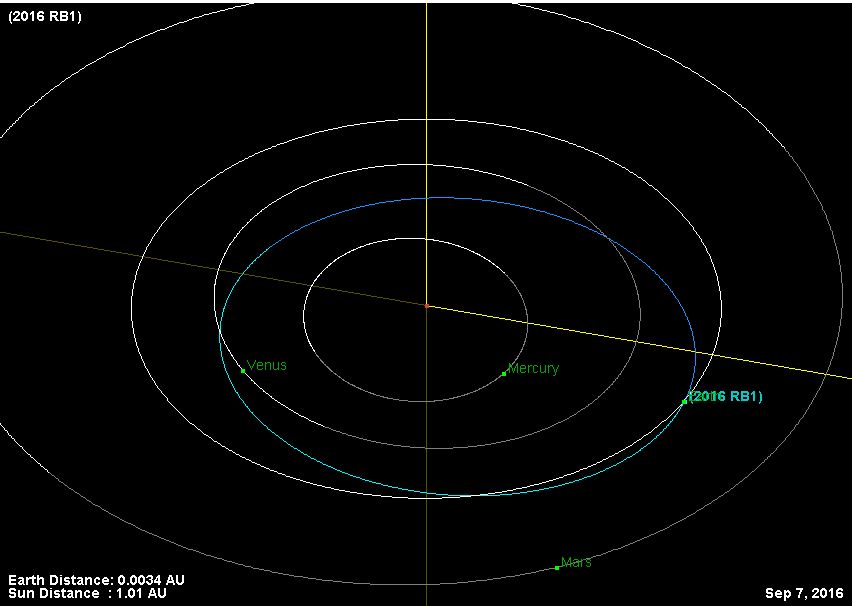As NASA prepares to send a spacecraft to a distant asteroid, another space rock made a surprise visit to Earth’s vicinity. The newly discovered small asteroid, named 2016 RB1, passed safely by Earth, coming within approximately 23,900 miles (38,463 km) of our planet, or just outside the orbit of many communications satellites.
The asteroid passed by Earth at 1:28 p.m. Eastern Time (1728 UT).

Click on the image if it is not animating in your browser.
The asteroid was discovered on Monday, September 5 by the Mt. Lemmon Survey telescope in Tucson, Arizona. 2016 RB1 is estimated to be between 24 to 52 feet (7.3 – 16 meters) across, which is just a bit smaller than the Chelyabinsk meteor that exploded over northern Russian in February 2013, which was estimated to be around 56 ft (17 meters) wide.
On Thursday, September 8, NASA hopes to launch its OSIRIS-ReX mission to study asteroid Bennu and conduct a sample return, with the sample coming back to Earth by 2023. With the mission, scientists hope to learn more about the formation and evolution asteroids and of the Solar System as a whole.
Here’s a graphic comparing the small asteroid 2016 RB1 to other objects, compiled by Mikko Tuomela and Massimo Orgiazzi.

A few observers were able to track the asteroid, including Gianluac Masi of the Virtual Telescope project, and Ernesto Guido of the Remanzacco Observatory.

2016 RB1 is the third asteroid so far in September 2016 that traveled between the Earth and the Moon. Asteroid 2016 RR1 passed by at 0.32 lunar distances on September 2, and just a few hours later, asteroid 2016 RS1 passed by at 0.48 times the Earth-moon distance. But this latest asteroid pass is the closest, at 0.10 lunar distances.
From its orbit, astronomers have determined 2016 RB1 is likely an Aten asteroid, a group of Near-Earth Objects that cross the orbits of Earth, Venus and even Mercury.
Sources and further reading: Remanzacco Observatory
Virtual Telescope Project
JPL’s Small Body Database
Earth-Sky.org
Ian O’Neill at Discovery Space News/Seeker

